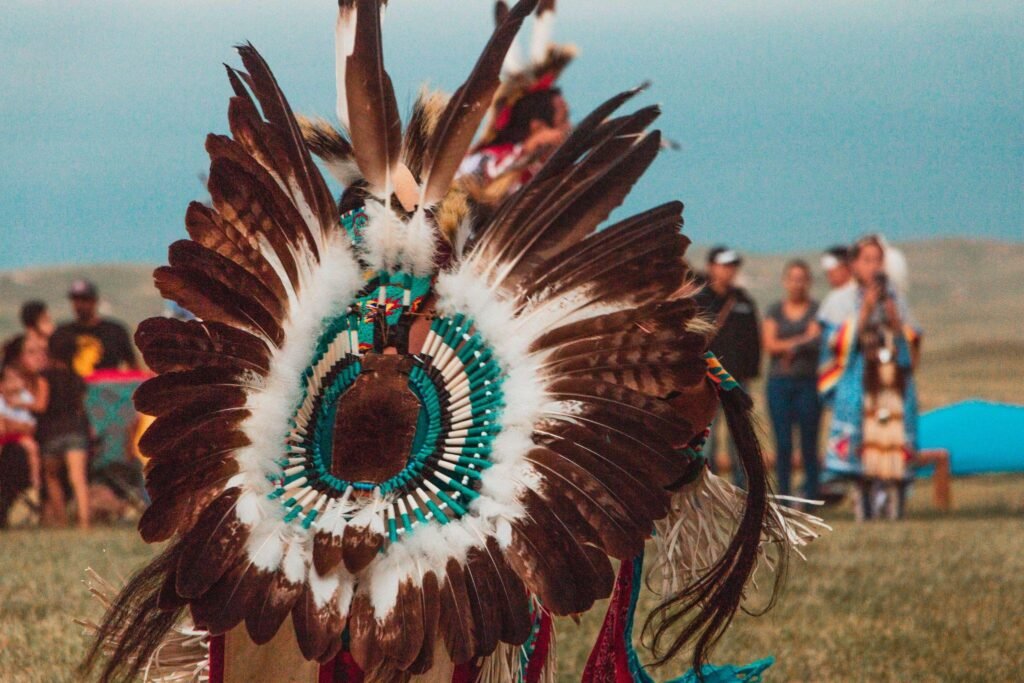Long before Christopher Columbus stood on American soil in 1492 and long after, Native American tribes have inhabited, and still inhabit, the land. There is a long history of adventure, cooperation, and curiosity, as well as bloodshed, revolt, and loss regarding the relationship between Natives and colonists. Their tumultuous history has an ongoing theme: land ownership. The French and Indian War, the Indian Removal Act, the Dawes Act, and the Wounded Knee Massacre are all examples of historical events that have affected Native American individuals and tribes. Political and social events, laws, and acts continue to affect Native tribes today, which over the years have molded and changed who they are and what they stand for, as well as have changed the overall Native landscape in America.
Native American tribes today are not a thing of the past, but they are strong and proud and continue to thrive despite the various factors that push against them. The individuals that make up the hundreds of Native American tribes today are what help make America a historical symbol of resilience.
A Quick History of the Tribe
Native American tribes were created and established well before Columbus set foot in America. They were looked upon as semi-independent nations and tribe members would live away from White settlers within their own community.
Since then, there has been much political debate on how much freedom in the eyes of the law a tribe has as well as where they should live. Between the 17th and 19th centuries, treaties were signed and laws were established which ultimately would remove Native tribes from their ancestral land, while removing much of the independence they once held.
Today, there are over 570 federally-recognized tribes, along with over 320 reservations, ones that have been titled “domestic dependent nations,” yet some continue to fight for their sovereignty. The United States continues to use its own legal system to define the relationship between the federal, state, and tribal governments. According to the National Congress of American Indians, tribal members are citizens of three sovereigns: their tribe, the United States, and the state in which they reside. They are also individuals in an international context with the rights afforded to any other individual.
While Native American tribes have come a long way, there is still tension between Natives and the United States government. Even today, there continues to be legislation proposed that relates to tribal land, rights, and sovereignty. We still have a long way to go.
What the Tribal Landscape Looks Like Today
According to experts at History.com, as more of an organizational method, geographers and anthropologists have divided Native American tribes into “cultural areas,” which are groups of people who share similar habitats and characteristics. These typically include:
- Arctic
- Subarctic
- Northeast
- Southeast
- Plains
- Southwest
- Great Basin
- California
- Northwest Coast
- Plateau
Continue reading and gain a brief overview of each area that makes up the Native landscape in America.
1. Arctic
This is considered present-day Alaska, Canada, and Greenland. The Inuit and Aleut tribes make these areas their home even today, although there has been a huge decline in their population due to oppression, disease, and now the negative toll of climate change.
2. Subarctic
The area of the subarctic consists of inland Alaska and Canada. A few of the tribes that call this area home are the Innu (Montagnais and Naskapi), Cree, Ojibwa, Chipewyan, Beaver, Slave, Carrier, Gwich’in, Tanaina, and Deg Xinag (Ingalik).
3. Northeast
This area is considered Canada’s Atlantic coast, all the way to North Carolina and inland to the Mississippi River Valley. Examples of tribes who live in this area include the Pequot, Fox, Shawnee, Wampanoag, Delaware and Menominee, Waccamaw Siouan, and the Eastern Band of Cherokee Indians.
4. Southeast
This region is located north of the Gulf of Mexico and south of the Northeast region just described. A few of the tribes that inhabit this area are the familiar Cherokee, Chickasaw, Choctaw, Creek, and Seminole.
5. Plains
The Plains area involves the prairie region between the Mississippi River and the Rocky Mountains, from present-day Canada to the Gulf of Mexico. Tribes associated with this region include Crow, Blackfeet, Cheyenne, Comanche, Sioux, and Arapaho.
6. Southwest
This region consists mostly of Arizona and New Mexico, along with parts of Utah, Colorado, and Texas. The Hopi, Yuma, Navajo, Apache, and Zuni tribes inhabit the Southwest area.
7. Great Basin
The Great Basin region is the large area, which comprises the Rocky Mountains to the east, the Sierra Nevadas to the west, the Columbia Plateau to the north, and the Colorado Plateau to the south. Some tribes that call this area home are Washoe, Ute, Paiute, and Goshute.
8. California
The Pomo Indians, Hopland Band, Yocha Dehe Wintun Nation, and Coyote Valley Band are just a few of the federally recognized tribes that reside in California today.
9. Northwest Coast
This area, along the Pacific coast from British Columbia to the top of Northern California, is home to the Athapaskan Haida and Tlingit, the Penutian Chinook, Tsimshian and Coos, the Wakashan Kwakiutl and Nuu-chah-nulth (Nootka), and the Salishan Coast Salish.
10. Plateau
Lastly, the plateau region makes up present-day Idaho, Montana, Oregon, and Washington. Some of the tribes that live in the plateau area include the Yakama, Umatilla, Warm Springs, and Nez Perce.
Conclusion
The culture, sovereignty, and landscape that make up Native American tribes have a long and arduous history. Despite disproportionality and ongoing challenges, Native people have persevered and continued on to fight for their rights as the original individuals who made up America before colonization. While there are various large and well-known Native American nations, each tribe, whether they be federally recognized or not, has the right to peace and happiness in America.
